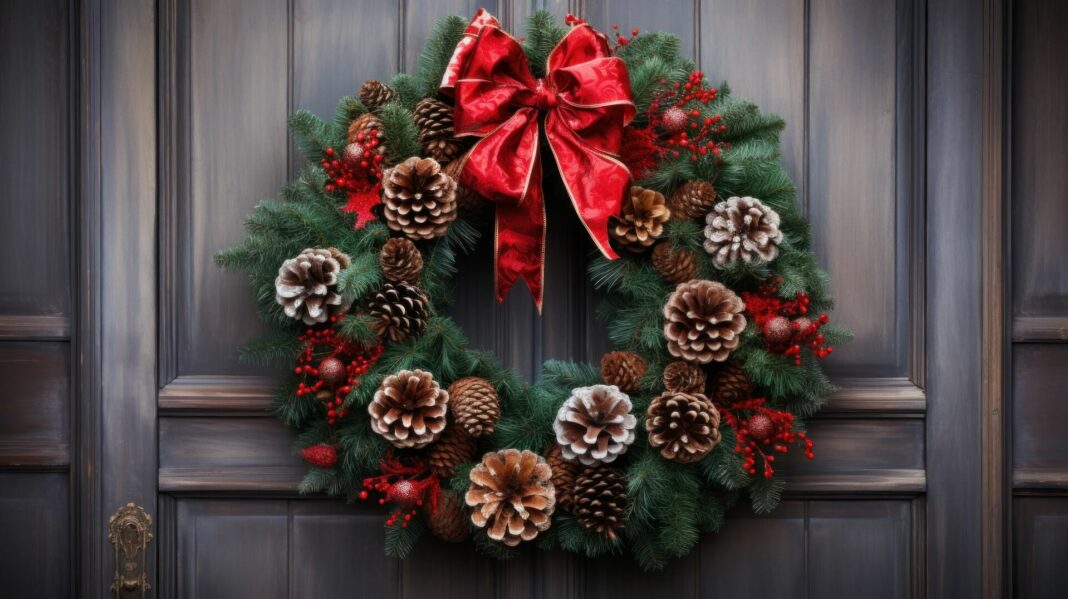By Sarah Allen
Every year, as the holiday season approaches, we see wreaths adorning doors, windows, and mantels, adding a festive touch to homes and communities. But have you ever wondered why people hang holiday wreaths and what lies behind this centuries-old tradition? Let’s uncover the fascinating history and symbolism that make the holiday wreath a cherished part of our seasonal celebrations.
Ancient Origins
The tradition of hanging wreaths dates back thousands of years to ancient civilizations, where they were used for various purposes. Ancient Romans, for instance, used wreaths made of laurel leaves as symbols of victory and honor. These laurel wreaths were awarded to victorious athletes, military heroes, and scholars.
Winter Solstice Celebrations
As Christianity spread, wreaths began to take on new meanings. In medieval times, wreaths made of evergreen branches were used to symbolize eternal life and the coming of spring during the dark, cold days of winter. They were often hung as decorations during winter solstice celebrations.
Advent Wreaths
The Christian tradition of the Advent wreath originated in Germany in the 16th century. The wreath, typically made of evergreen branches and adorned with four candles, symbolizes the four weeks leading up to Christmas. Each candle is lit on a Sunday of Advent, and the wreath is used as a countdown to Christmas, representing hope, peace, joy, and love.
Welcoming Symbolism
Wreaths also came to symbolize hospitality and welcome. In 19th-century America, families would hang wreaths on their doors as a sign to travelers and carolers that they were welcome to enter and share in the holiday spirit. This tradition of hospitality and friendliness is still prevalent today, as many people hang wreaths on their doors to welcome guests during the holiday season.
Variations and Regional Traditions
Holiday wreaths come in various shapes, sizes, and materials, and their designs can vary widely. Some regions have their own unique wreath traditions. For example, in Mexico, it’s common to hang a “guirnalda,” a wreath made of colorful, paper flowers, during the Christmas season. In Scandinavia, straw wreaths are popular, often adorned with candles, while in Eastern Europe, Christmas wreaths may include fruits and nuts.
Interestingly, a traditional holiday wreath is made of fresh evergreen. Together, the circular shape of the wreath and the evergreen material make it a representation of eternal life and a representation of faith for Christians during the holiday season.
Modern Symbolism and Personalization
Today, holiday wreaths are not only a symbol of tradition but also a means of personal expression. Many people create or purchase wreaths that reflect their individual styles and tastes, using a variety of materials like pinecones, ornaments, ribbon, and even LED lights to add a modern twist. Some homeowners also include specific ornaments or colors that have personal significance.
A Timeless Tradition
The holiday wreath has transcended time and culture, evolving from ancient symbols of victory and life to modern-day expressions of welcome, celebration, and personal style. Whether you hang a wreath for its historical symbolism or simply because it adds a festive touch to your home, the holiday wreath remains a beloved and enduring tradition that brings joy and warmth to the holiday season.


